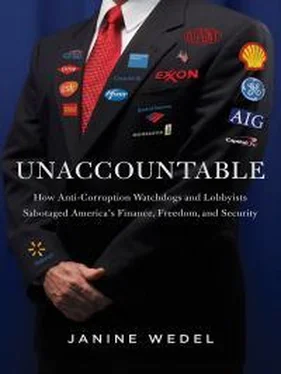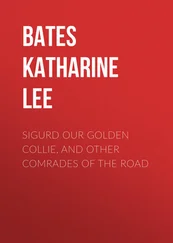Meanwhile, the metrics have consequences. A country’s ranking on the CPI and other indices like it is not just a thirty-second news story on the evening news: it can batter or better national reputations. It is used to benchmark developmental progress. TI itself has claimed that the CPI “influences the policies of major aid agencies and is a factor in the foreign investment decisions of multinational corporations.” Aid agencies have told countries they need to improve their TI (or similar) scores to qualify for assistance. 85
The Corruption Perceptions Index pioneered a trend. It was (and probably is) the best-known metric of its kind. It helped spawn not only a body of corruption literature and a (pseudo) science of comparison, but it also gave birth to an entire genus of ranking systems. 86Indices generated by the World Bank and a plethora of NGOs, consulting firms, and think tanks sought to tweak it, improve on the idea, or simply, as one scholar put it, to “provide a particular agency or NGO with a ‘signature’ index to attract visibility and funds.” 87The “science” of comparison across countries was now possible and palatable to the public. 88Soon to follow were annual rankings of countries according to their levels of “good governance,” democracy, and even economic freedom. 89
All this fits perfectly with a larger trend in international practices and institutions and among their globetrotting subscribers: up with numbers and down with words. A few years ago, numbers began to systematically replace words as a way of analyzing transnational governing developments and initiatives. 90In “What Do Numbers Do in Transnational Governance?” two scholars show that “numbers increasingly complement if not displace linguistically articulated norms.” Removed from their context, slipping agilely across international boundaries, and seductive in their simplicity, numbers take on mythical, even magical, powers. They provide an “illusion of transparency.” 91We are seduced, yet deceived.
The metaphors employed by the number crunchers are no less deceptive. Metaphors are colorful ways of explaining a position and a powerful communications tool, which is why they are ubiquitous in political and public discourse. They can help mobilize movements. But they come with built-in bias, hiding certain features of an issue while highlighting others. 92When confused with analysis, as they often are, metaphors can obfuscate actual analysis. 93They obscure more ambiguous and more insidious activities that can have far graver consequences.
Relying on metrics as a substitute for inquiry is not only a fetish of ivory tower, World Bank, and anti-corruption economists: the practice was—and is—rampant in the financial industry, among other arenas (like VaR in finance). Doing so gives their audiences—be they policymakers, the public, or fellow CEOs—a false sense of calm and control. But, of course, this is delusional and causes (yes, immeasurable) harm.
In short, these assumptions of the anti-corruption industry, along with the powerful imprimatur of the activist High Priests, has so dominated the world of anti-corruption that the new corruption has only recently begun to enter the imagination of the industry.
IRONY IN OVERDRIVE
While the diagnosticians and anti-corruption surgeons busied themselves with ranking systems and surveys and dispensing prescriptions, a new class of power (and money) brokers was on the rise. Many were far too savvy to break the law, even if stretching its limits. Their opportunities mushroomed with the mass privatization of state-owned wealth and the invention of novel global financial products enabled by new information technologies, among other developments. 94
The straitjacketed thinking of the economists and their industry acolytes allowed them to get away with playing a double game. It even allowed some high-profile economists to be corruption experts while simultaneously engaging in the new corruption themselves. On the ground in eastern Europe, I had observed certain prominent Western consultants plying their influence as they moved among academia; Washington; and Warsaw, Moscow, Kiev, and the like. These budding flexians, as I call them, were adept at “representational juggling” as they performed multiple roles across multiple spaces with multiple sponsors, without fully disclosing them. 95Those honing the new corruption while doubling as scholars of corruption and policy advisers especially caught my attention.
Harvard economist Andrei Shleifer illustrates the irony of the extremes to which some would go. At the same time Shleifer was “modeling” corruption in scholarly writings (and cited liberally by corruption scholars and in anti-corruption handbooks) and defining it essentially as bribery, he was a personal example of the new corruption. 96
While leading Harvard’s U.S. government-funded project to reform Russia’s economy and helping craft the blueprint for the corruption-inducing privatization scheme launched in 1992, Shleifer also made personal investments in many of the same areas in which he was being paid to provide impartial advice—thereby allegedly defrauding the U.S. government, according to the U.S. government. 97A chief Shleifer argument—that a shrinking state sector would necessarily help minimize corruption—would prove to be flat wrong. Later, writing for the prestigious Foreign Affairs about the Russian “reforms,” he was identified simply as a Harvard professor—not someone who had helped design them. Of course, he declared them successful. 98Neither the publication nor Shleifer himself revealed that, in fact, he was grading his own homework. 99
All the while, the professor presented himself as an independent analyst, and the powers that be drank the Kool-Aid. He even delivered testimony before a congressional committee as a scholar on corruption.
Such players as Shleifer exemplify just how much our culture has changed—accepting without question exemplars of the new corruption in the same person as scholars of the old. And still their scholarship on corruption is taken on faith.
And what of the principal-agent theory that was supposed to explain corruption so well? At first glance, Shleifer (the agent), leading a signature U.S. government aid project, failed to serve his principal (the U.S. government). But on closer examination, powerful parts of the principal were complicit, to say the least. Shleifer secured aid funding to reform Russia’s economy in the form of (highly unusual) noncompeted U.S. awards (with help from Larry Summers when he served as a high U.S. Treasury official in the Clinton administration). And was he the principal or the agent when he was covering his tracks in congressional testimony and Foreign Affairs ?
The assumptions, approaches, and theories of the economists have clouded our vision to the point that they obscure the activities of the irony manufacturers, not to mention some of the biggest, baddest actors of the new corruption.
BACK-PEDDLING?
While not quite by conscious design, the assumptions and approaches of the economists and the anti-corruption industry weakened their eyesight—and set us up for the same.
Much like the Vatican, the High-Priest economists issued periodic reforms. In time, for instance, economists expanded the shrinking-government-to-fix-it notion to incorporate governance and institutions (which other social scientists had already been doing). 100In 2006, several World Bank economists expounded on the learning that had taken place over the previous decade: “Today there is widespread consensus among policymakers and academics that good governance and strong institutions lie at the core of economic development.” 101
Subsequent scholarship on corruption would broaden the views of some economists. In time, too, some of the High Priests went beyond their concentration on garden-variety corruption. By 2000, structural and institutional relationships, such as the concept of “state capture,” defined in a World Bank publication as “the actions of individuals, groups, or firms both in the public and private sectors to influence the formation of laws, regulations, decrees, and other government policies to their own advantage . . .” [emphasis in original] was commanding more research attention. 102The concept of state capture describes the illicit and non-transparent manipulation of state power to benefit private interests, whether of politicians or private sector firms.
Читать дальше












